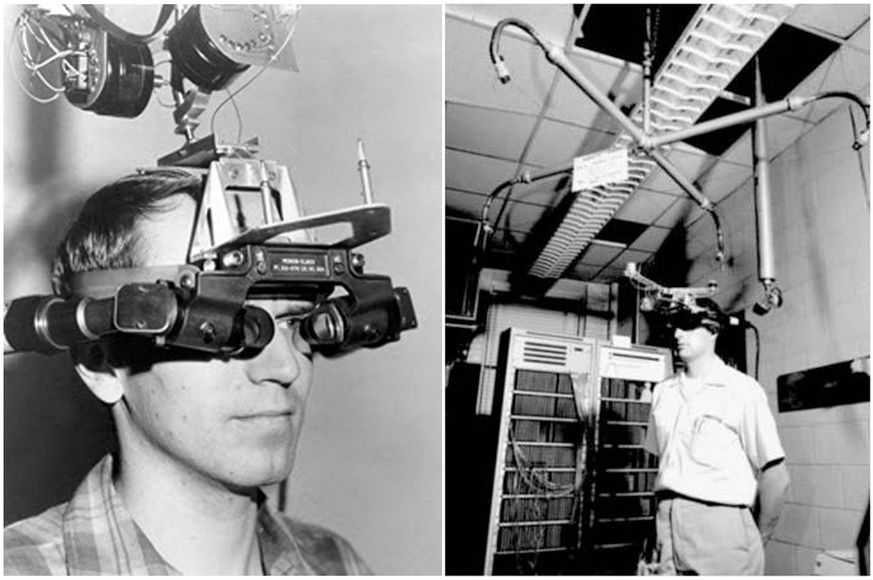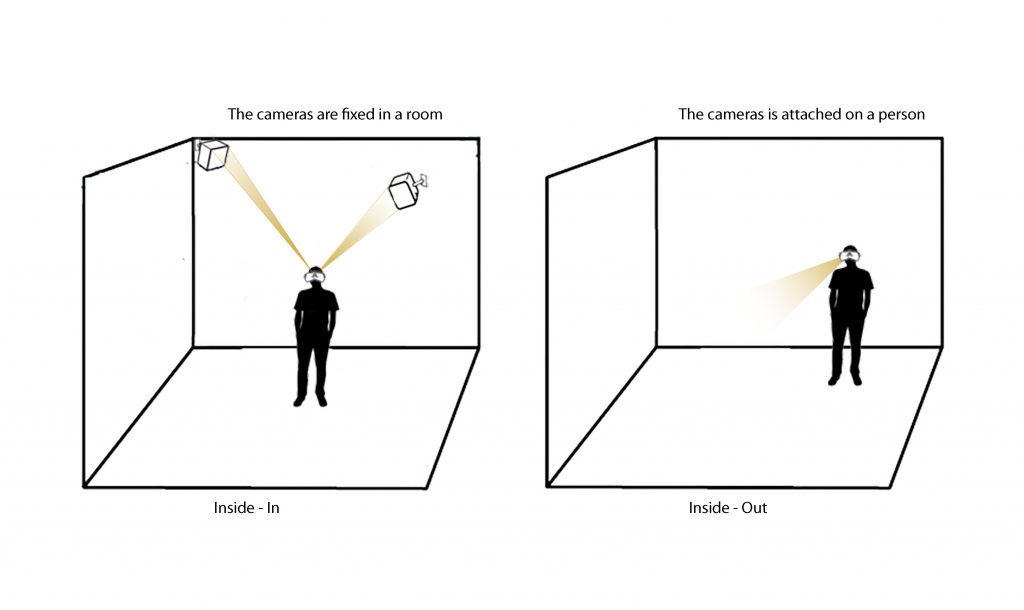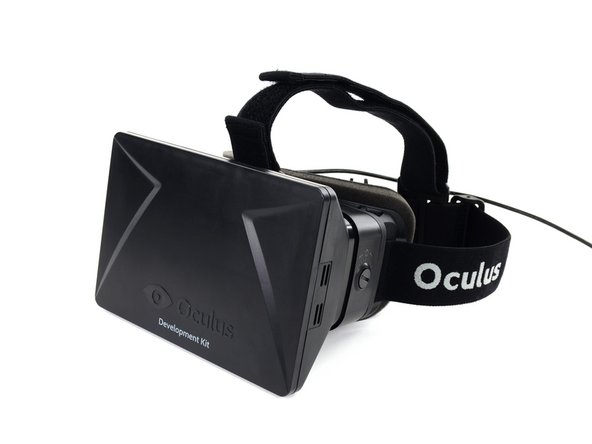VRpornManual.com > The Then, Now & Future of Virtual Reality
First things first, you may have heard the term Virtual Reality (VR) being thrown around a lot lately, but what is it? VR is the technology that allows you to experience a world that doesn’t exist, usually via a device called a ‘headset’.
Modern VR technology can be used for a variety of applications within the entertainment and education fields. The concept of Virtual Reality has been around since the early 1960s, but the VR systems we know today are vastly different and more complex.
The first known concept of a device that involved multiple human senses was by cinematographer Morton Heilig and named the ‘Sensorama’. He used his cinema knowledge and experience and in 1962 had built a prototype of his Sensorama concept, as well as 5 short movies that could be displayed in it.
Considering that this prototype predated modern digital computing, this was a mechanical device and was roughly the size of a large refrigerator but was able to engage four of our human senses; sight, sound, touch and smell. This machine opened up the concept of Virtual Reality to the world, and it has come a long way since then.
Six years later, what was considered the first head-mounted display was created by Ivan Sutherland with help from his students at the University of Utah.
Sutherland is an American Computer Scientist and is widely regarded as the “father of computer graphics”. Sutherland and his students designed the huge headset that ended up being so large, that it had to be suspended from the ceiling.
The experience used simple wire-framed models, so the experience, while mind-boggling at the time, was not super complex.

The technology behind the modern VR headsets can become complicated the further you delve into them, but the general structure is generally easy to understand.
The headsets use motion-tracking sensors and gyroscopes to track head and body movements, two stereoscopic (different image in each eye) displays to provide the images, as well as small but powerful computer processors to coordinate all of the signals.
Most VR headsets also require to be connected to a mid to high-range PC to be able to process the media, or in the case of the PlayStation VR, an additional processor box must be connected between the headset and the PlayStation console. The

The sensor tracking systems can either be an ‘inside-out’ system, or an ‘outside-in’. The difference is that with outside-in, the motion is tracked by an external source, which is usually one or more cameras facing the headset.
This is currently the most accurate of the two tracking technologies but comes with the drawback that you have to stay within the view of the camera.
If you were to walk behind something, like say a couch, and the camera cannot see the headset correctly, you will lose the connection.
With VR headsets that use the ‘inside-out’ technology, they will have the camera placed on the headset itself and point outwards.
The coolest advantage that this gives you is the freedom to move around and out of the bounds that the usual ‘outside-in’ system has you confined to, and you no longer need to be attached to your PC like a dog on a leash.
While the independence of being to go almost anywhere with your headset can be amazing, the tracking technology is not quite as good as the ‘outside-in’ system yet.
Until the tech catches up, the inferior tracking and the increased latency leads to a less ‘smooth’ experience and in turn, the likelihood of getting motion-sickness increase dramatically.
Modern VR has come a long way since it’s early concepts, and there are currently a few main competitors in the ever-evolving market of VR headsets; Oculus with their Rift, Quest and Go, HTC with their Vive headset, and Sony with their PlayStation VR system.
The Rift from Oculus was the earliest consumer headset to be released between these modern companies, and it shocked people with how mind-blowing the technology felt to use for the first time back in March of 2016. The headset boasted two OLED displays with resolutions of 1080 x 1200 and a 90hz refresh rate.
With a release price of US$599, this first iteration of the modern headsets made it hard to break into the world of VR for the average

The pricing for getting into the VR realm is where the PSVR shines; if you already have a PlayStation 4 that is.
For only US$399 at its time of release in October 2016, you could purchase a VR headset that works with your PlayStation 4 console.
The PSVR also released with two OLED displays, but these were only capable of displaying at 960 x 1080 per eye.
The future of Virtual Reality is looking amazing, with almost limitless possibilities can expand into many different aspects of our careers and lives.
One of the most exciting areas for the near future of VR is having much slimmer and more portable ‘inside-out’ devices that allow us to experience VR worlds with complete freedom, rather than being confined to smaller areas and using bulky and heavy headsets.
Another stirring thought of the future of VR is when the displays in the headsets become so good, that you will forget you are actually in a make-believe world. The displays have the potential to become this good in the future but are currently far below quality until the development progresses more.
Current displays not only lack the pixel per square inch factor but also the field of field (FOV) is not even close to the naked eye.
Humans have almost a 210-degree field of view, but the average FOV for the main VR headset on the market today is around 110-120 degrees. When the displays can come close to mimicking the same display as the human eyes, this is when VR will become almost indistinguishable from reality.
Although the possibilities for the future of VR are amazing, there are still a few issues and hurdles holding these possibilities back; development costs and public view being the biggest two. The cost of developing these technologies and their compatible applications are still very high and some people believe this is the main reason that VR technology isn’t developing as fast as it could.
The public view of VR is also an issue, as some people don’t see VR as having use in our society. This can mainly be drawn down the fact that a large majority of the public aren’t aware of the possibilities and advantages that VR can bring to the table.
If enough development and brainstorming are done, it would be hard to not find a place where VR could improve the lives of people in almost any career, from helping designers design whole rooms and houses to doctors receiving advanced training in medical procedures.
The world of VR is incredible, and we have only just started to scrape the surface of what we can do with this relatively new and amazing technology. If you haven’t already, try out some form of VR soon, you will likely be amazed, time and time again.